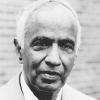Subrahmanyan Chandrasekhar

Subrahmanyan Chandrasekhar
Subrahmanyan Chandrasekhar, FRS, was an Indian American astrophysicist who was awarded the 1983 Nobel Prize for Physics with William A. Fowler "for his theoretical studies of the physical processes of importance to the structure and evolution of the stars". His mathematical treatment of stellar evolution yielded many of the best current theoretical models of the later evolutionary stages of massive star and black holes. The Chandrasekhar limit is named after him...
NationalityIndian
ProfessionScientist
Date of Birth19 October 1910
CountryIndia
Subrahmanyan Chandrasekhar quotes about
The black holes of nature are the most perfect macroscopic objects there are in the universe: the only elements in their construction are our concepts of space and time.
Indeed, I would feel that an appreciation of the arts in a conscious, disciplined way might help one to do science better.
Science is a perception of the world around us. Science is a place where what you find in nature pleases you.
I am aware of the usefulness of science to society and of the benefits society derives from it.
Beauty is that to what the human mind responds at its deepest and most profound.
all the standard equations of mathematical physics can be separated and solved in Kerr geometry.
In some strange way, any new fact or insight that I may have found has not seemed to me as a "discovery" of mine, but rather something that had always been there and that I had chanced to pick up.
Macroscopic objects, as we see them all around us, are governed by a variety of forces, derived from a variety of approximations to a variety of physical theories. In contrast, the only elements in the construction of black holes are our basic concepts of space and time. They are, thus, almost by definition, the most perfect macroscopic objects there are in the universe.